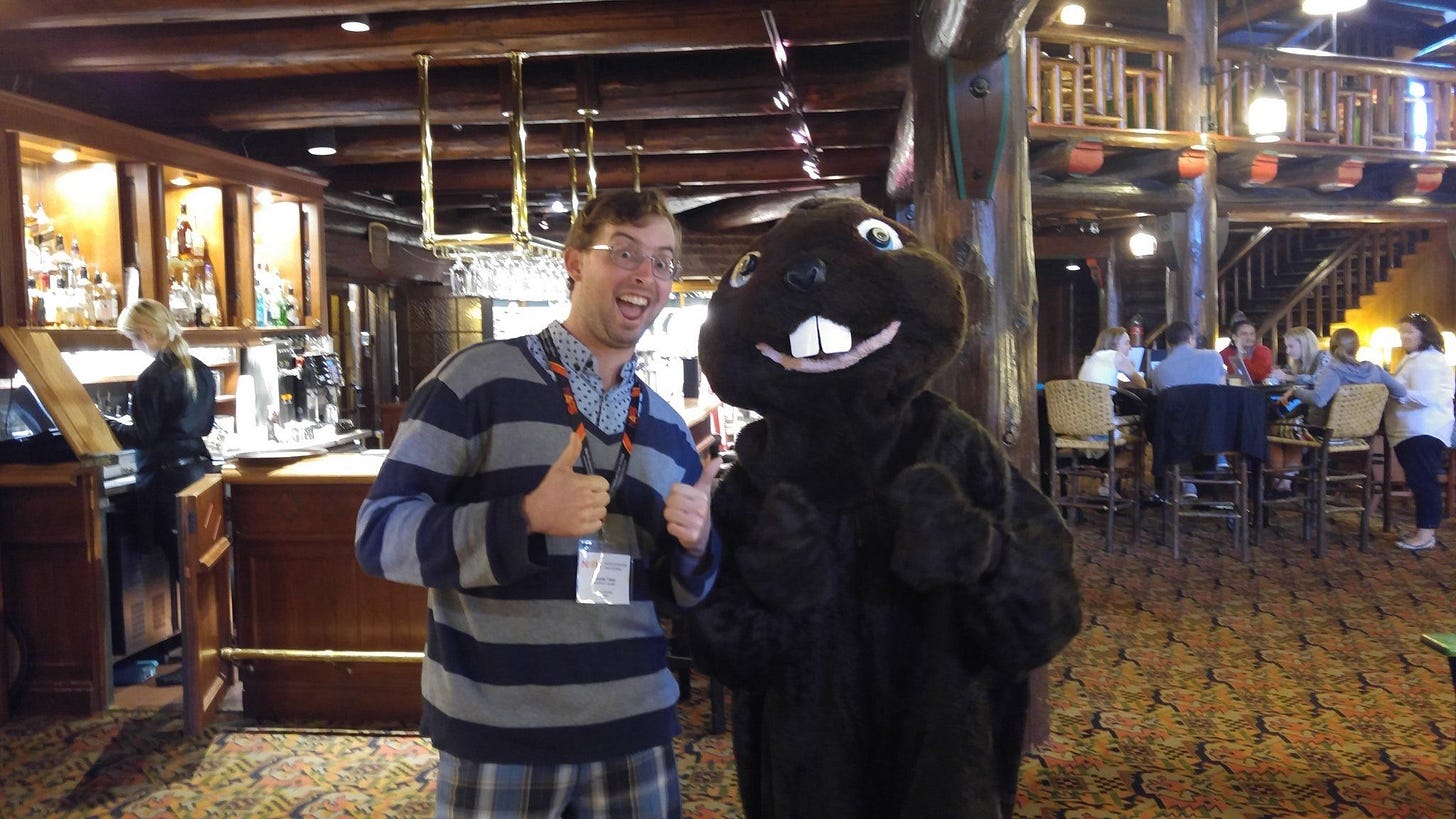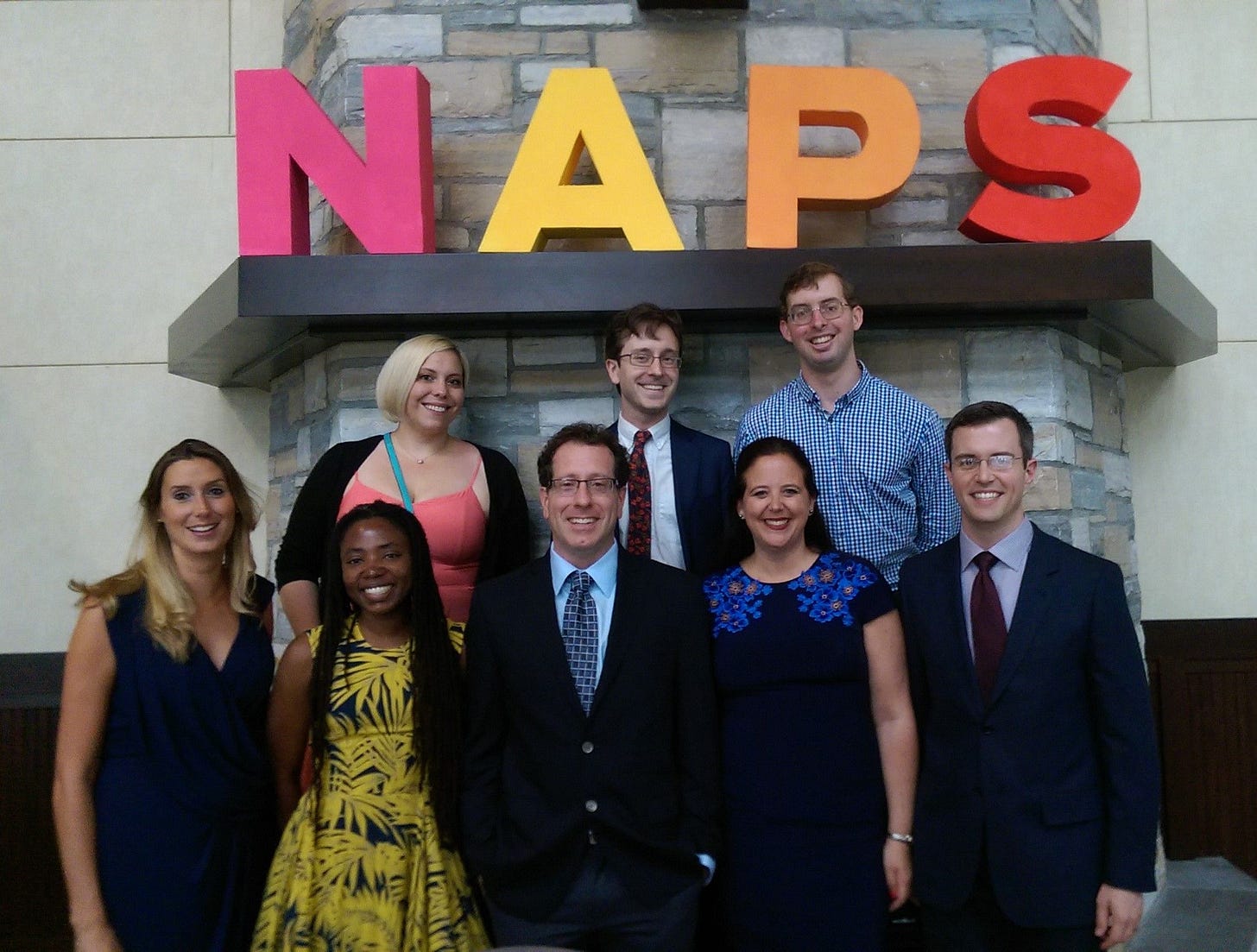This is the latest of a slightly different series of posts, where I talk about the different aspects of my career, how I got to where I am today, and where I want to go in the future.
After submitting my PhD thesis in the middle of 2017 I flew to Canada to attend the North American Pain School, or NAPS.
NAPS is an international educational initiative that brings 30 postgraduate students and early career researchers together with leading experts in the field of pain management and research for a week of networking, professional development, and scientific education. The program, which first ran in 2016, is hosted in a beautiful chateau in Montebello, about an hour out of Montreal.
I was unsuccessful in my attempt to be part of the initial intake, but I didn’t let that stop me from trying again.
While attending a conference in Yokohama, Japan, in September 2016 I made sure to speak to Professor Jeffrey Mogil, the program’s director, during a poster session. I was keen to hear about how the first year had gone, and to reiterate my interest in getting an opportunity to be part of it.
To this day I’m not sure whether my application the following year was more convincing, whether Jeff had a face to put to the name, or he was sick of an Australian trying to butt in on what they were doing. It didn’t matter. I was the first person from the southern hemisphere to be invited to attend NAPS.
IMAGE: The NAPS Class of 2017, along with the leadership team and visiting faculty.
This level of representation would continue in 2018, 2019, and 2022 with Anne Burke, Saurab Sharma, and Aidan Cashin attending in subsequent years. (Emily Mills, who was part of the class of 2023, and Samantha Millard, class of 2024, also did their PhD in Australia before moving to overseas for further opportunities, so I feel they count as well!)
During my time at NAPS, I was also lucky enough to be selected to participate in the additional science communicators program. As part of this program, six of the attendees received additional training in science communication to improve our ability to convey pain research to expert and general audiences alike.
Image: Members of the science communicators program
The program involved interviewing one of the faculty members running the pain school and writing up a summary of one of the lectures delivered by another faculty member, which were published on an international blog called Pain Research Forum. PRF is an interactive community for researchers and clinicians dedicated to accelerating the discovery of new treatments for pain.
I really enjoyed getting to turn the interview transcript and my notes from NAPS into stories and got along really well with Neil Andrews, the editor of the blog, so after I returned to Australia I started working for them (and their former sister publication, RELIEF, which was designed more for patients and the general public) as a freelance writer. The work was largely similar to what I had done in Canada - interviewing people about their careers and summarising recent research studies.
Working with PRF and RELIEF also made it easier justify (and pay for) travelling to international conferences, such as when I went to Boston in September of 2018 to attend my second World Congress on Pain (the first World Congress I attended was two years earlier in Japan).
This was a great trip, as I got to reconnect with many of the friends I had made at NAPS the year before and write a story or two.
In 2019 I started writing for BrainPost, a blog/newsletter that had more of a general neuroscience focus. However, the work still involved creating easy-to-read summaries of the latest research to help keep people up to date with everything that was happening in the field. It was only a volunteer (i.e., unpaid) position, but it was a good opportunity to get my work published while continuing to refine my storytelling skills in a slight different area. I wrote for them for four years, finishing up in early 2023.
2019 was also the first year I first created content for the Australian Pain Society and their annual conference. I had joined the society a few years earlier when I started my PhD, and was keen to use the storytelling skills I had developed to give more attention to the great people within the society, along with highlighting the great work they were doing. We’ve worked together every year since (apart from 2020 and 2021, when the conference [and the broader society] was impacted by the covid pandemic), and am looking forward to what will be another great conference in Melbourne later this year. I always learn something completely new while working for the APS - like this year when I learned about passive housing, an energy-efficient building approach that reduces a building’s carbon footprint.
Neil left PRF in late 2021, but it didn’t take long for our paths to cross again. In early 2022 he popped up in my inbox to let me know he had taken a job as the executive editor of Migraine Science Collaborative, a non-profit news website and information resource hub for the global community of migraine and headache basic scientists, clinical researchers, and clinicians. Neil was looking for writers to help to build MSC up to be the migraine and headache equivalent of PRF, and I jumped at the chance to work with him again. He always supported and encouraged me from my early freelancing days, and I was keen to repay that assistance.
After a few years of working as a freelancer, I realised I was enjoying my side hustle more than my day-to-day job as a researcher. Towards the end of 2022 I made the decision to apply for a three-month internship with The Medical Republic, a Sydney-based publication that provides political and clinical news coverage (both online and in print) for GPs and other medical specialists. The editorial staff were very impressed with my performance during the internship, and offered me an ongoing part-time position in early 2023. And I’m still there today!
I’m also still freelancing for PRF and MSC on the side, albeit in a reduced capacity to what I was doing in the past. There are always interesting stories to cover, such as this recent piece on how virtual reality is being used for managing acute and chronic pain in clinical settings. I wrote this story in 2022, where I learned about how a chance encounter with Paul Simon led to Graceland being used as as background music in a treatment for burns patients, but it wasn’t published until earlier this year.
I’m really proud of what I’ve achieved over the last six or seven years in this space. While I certainly am pleased to have had the most read story on MSC in each of the last two years (a piece on how psilocybin - the psychedelic component of magic mushrooms - is being used to treat cluster headaches in 2023, and an interview with Danish researchers who are investigating people who claim they’ve never had a headache in 2024), I also take a lot of pride in some of the other stories I’ve gotten to tell - even if they’re not immediately popular.
For example, it was an eye-opening experience to speak with Dr Donna Lyon, a lecturer, film producer, former amateur boxer, two-time marathon runner, and survivor of childhood sexual abuse and trauma, about how she developed Left Write Hook, a unique, trauma-informed program that combines boxing and writing to help sexual abuse and trauma survivors regain empowerment over their bodies and their stories.
I could have never imagined that getting to spend a week in Canada while fighting jet lag from flying half way across the world would lead me down a completely different career path, but I’m incredibly glad - and grateful - that it did.
If you’re interested in reading any of my journalism work, click here for a complete list of my medical and scientific freelance stories, or here for a list of stories I have produced while working for The Medical Republic.
Alternatively, if you want to chat about how I could use my storytelling skills to help you and/or your organisation, drop me a line here.







Super read Lincoln